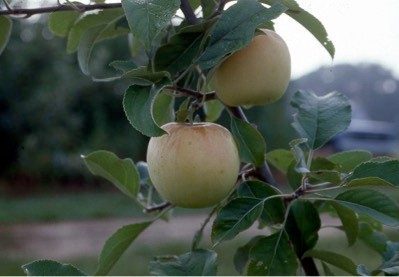This content is for informational purposes only and does not constitute financial, legal, or professional advice. Always consult a certified professional before making financial or investment decisions. As an affiliate, we may earn a commission from qualifying purchases made through links in this post at no extra cost to you.
As the apple harvest season comes to a close, many apple enthusiasts find themselves wondering how to preserve these delightful fruits for enjoyment throughout the year. One traditional and time-tested method that has stood the test of time is storing apples in a barrel. But How to Store Apples in a Barrel? Most people don’t know what are the actual and essential steps of preserving apples in barrels. As a result, most people are deprived of getting fresh apples in the off-season.
When it comes to preserving the natural freshness and flavor of apples, storing them in a barrel has long been a tried-and-true method. The art of storing apples in a barrel dates back generations and offers an excellent solution for those looking to prolong the shelf life of this beloved fruit. By following a few simple steps, you can create an optimal storage environment that will keep your apples crisp and delicious for an extended period.
This age-old technique not only enhances the longevity of apples but also imparts a unique flavor profile to the fruit. In this essay, we will delve into the intricacies of storing apples in a barrel, exploring the steps required to create an ideal environment that maintains the apples’ texture, taste, and nutritional value. Whether you are a home gardener or an apple lover seeking to savor the flavors of the season, mastering the art of storing apples in a barrel is a skill worth acquiring.
How to Store Apples in a Barrel – 9 Essential Steps For Long Term Preserving
Apples are delightful fruit known for their crispness and natural sweetness. To preserve their freshness and extend their shelf life, storing apples in a barrel is a traditional and effective method. In this essay, we will discuss the steps involved in storing apples in a barrel to ensure their long-term preservation and enjoyment.
Step 1: Choose the Right Barrel –

Selecting an appropriate barrel is crucial for successful apple storage. Look for a barrel made of food-grade materials, such as oak or plastic, that are clean, sturdy, and free from any contaminants. Ensure that the barrel is large enough to accommodate the quantity of apples you intend to store, with sufficient space for air circulation.
As well as select a barrel that is clean, dry, and large enough to hold the number of apples you wish to store. It should also have an airtight lid or cover so that no insects can get inside.
Step 2: Prepare the Barrel –

Thoroughly clean the barrel before use to eliminate any lingering odors or residue that could potentially affect the flavor or quality of the apples. Wash the barrel with hot water and a mild detergent, rinsing it well to remove all traces of soap. Allow the barrel to air dry completely before proceeding.
Step 3: Sort, Inspect and Prepare the Apples for Storage –

Wash the apples with cool water before placing them in the barrel Make sure all dirt has been removed from their skin and remove any leaves, stems, or damaged fruit as these will cause decay over time if left on during storage.
Before placing the apples in the barrel, carefully sort through them and remove any damaged, bruised, or rotting fruits. Such apples can release ethylene gas, which accelerates the ripening process and may lead to spoilage of neighboring fruits. Inspect each apple for any signs of decay or disease, and set aside any questionable ones for immediate consumption.
Step 4: Line the Barrel –

To provide an additional layer of protection for the apples, consider lining the barrel with food-grade plastic or parchment paper. This lining will help prevent direct contact between the apples and the wooden barrel, reducing the risk of spoilage and maintaining the fruit’s freshness.
Step 5: Place Sand on the Bottom of the Barrel –

Spread an inch-thick layer of sand at the bottom of your chosen barrel then distribute it evenly throughout its interior walls and floor area to absorb moisture as well as provide insulation against extreme temperatures which could lead to rotting fruits later down the line when stored in warm environments like attics or basements.
Step 6: Layer the Apples –

Begin by placing a layer of apples in the barrel, ensuring that the fruits do not touch each other. This spacing allows for better air circulation, reducing the risk of moisture buildup and the spread of spoilage.
Continue layering the apples, using a straw or clean, dry paper towels to separate each layer. Ideally, place the larger and firmer apples at the bottom, gradually progressing to the smaller and softer ones on top.
Carefully fill up your selected container with freshly washed apples making sure not to pack too tightly since this would limit airflow between individual pieces and increase the risk of spoilage due to excessive heat build up within such constrained areas leading again toward potential mold growths amongst other issues
Associated with poor ventilation levels around food items being preserved/stored away over extended periods without proper care taken prior to setup steps involved here mentioned above.
Step 7: Store The Barrel –

After layering the apples, carefully tighten the lid of the barrels. Store your barrels in an area that is cool and dark such as a cellar or pantry, preferably away from other food items so any bacteria won’t spread between foods if moisture gets into them.
Step 8: Monitor Temperature and Humidity –

Apples require specific temperature and humidity levels to maintain their freshness. The ideal temperature for apple storage is between 30 and 35 degrees Fahrenheit (-1 to 2 degrees Celsius), with a humidity range of 90-95%.
Use a thermometer and a hygrometer to monitor and adjust the storage environment accordingly. Avoid storing apples near other fruits or vegetables that emit ethylene gas, as it can cause premature ripening and spoilage.
Step 9: Regularly Inspect and Rotate –

Throughout the storage period, regularly inspect the apples for any signs of decay or spoilage. Remove any affected fruits promptly to prevent the spread of spoilage. Additionally, periodically rotate the apples within the barrel, bringing the bottom layers to the top.
This rotation helps distribute any natural ethylene gas produced by the apples, ensuring a more even ripening process and extending their shelf life.


